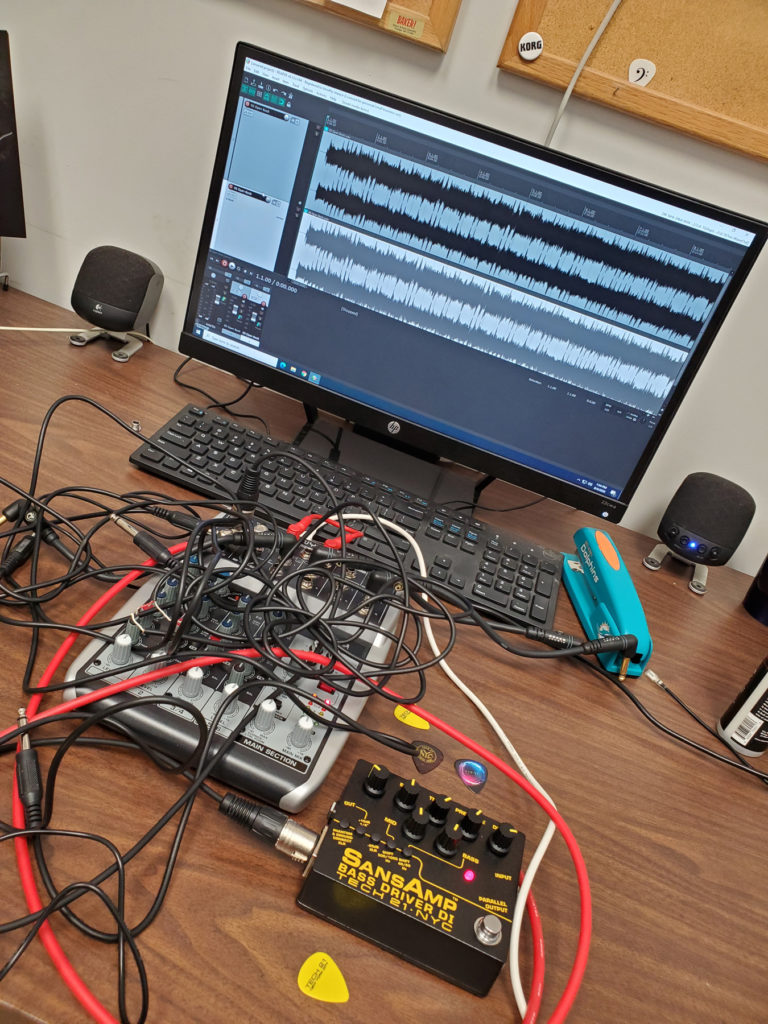
Years ago, things were easy. Just plug your guitar or bass into your amp and go. Now, we’re plugging into many things at the same time — amps, pedals, interfaces, mixers, computers– and wondering why there’s noise. Your natural instincts are to suspect something is wrong with the equipment, right? Not so fast. What kind of noise are you hearing? Is it a buzz like an electrified bee stuck in your umbrella or a low-pitched hum like a congested cat purring?
Connecting multiple devices poses the risk of creating a ground loop because there’s more than one path to ground, which causes noise, hum and interference. So you need to know how to quarantine the guilty parties. (We know. You are you so dang tired of quarantining… sigh…)
So where’s the problem and how do you solve it?
If, for example, you’re using a SansAmp Bass Driver DI (or any of our DI pedals), it can be connected to an amp (which is grounded) and a mixing console (which is also grounded). The 1/4″ cable going to the amp is grounded and so is the XLR cable going to the console. Boom! You have a loop. So, one of the grounds needs to be disconnected. Fortunately, this one is easy. Simply move the ground connect switch on the Bass Driver to the left to disconnect the ground on the XLR cable. Voila! The loop is broken and the hum is gone. Luckily, most devices with 1/4-inch and XLR outputs will allow you to disconnect the ground on the XLR, in the unlikely event you’re not using one of our DI pedals.
Connecting rack gear can be a little more complicated, as there are more scenarios that can cause a ground loop (multiple AC grounds, chassis grounds on the rack rail, etc.). In order to eliminate a ground loop on rack rails, the gear needs to be installed using isolation washers. They isolate the chassis of the device from the rack rail. You can also have a ground loop on the AC cables. Back in the dark ages, it was common practice to defeat the ground on an AC power cable. This is an unsafe practice because the safety ground prevents electrical shocks. So how do we safely eliminate a ground loop in this case? An isolation transformer. It transfers the audio signal from one piece of gear to another without connecting the grounds together.
Troubleshooting ground loops can be daunting after your gear is all set up. But if you make your connections by adding one piece at a time, you can solve the ground loops as they occur and end up with a clean, quiet and safe signal chain.

